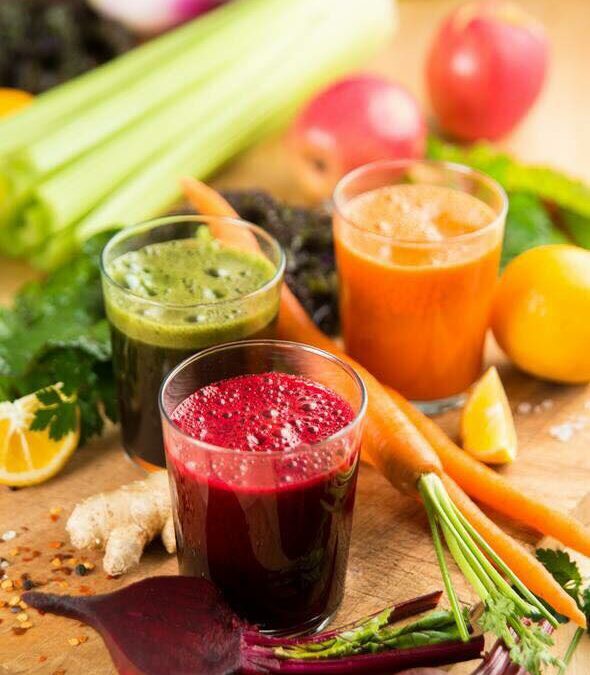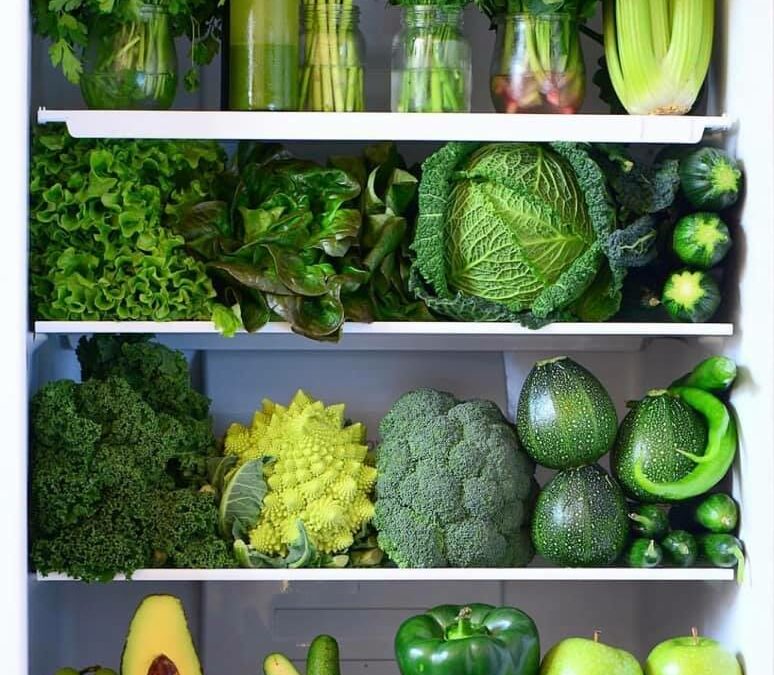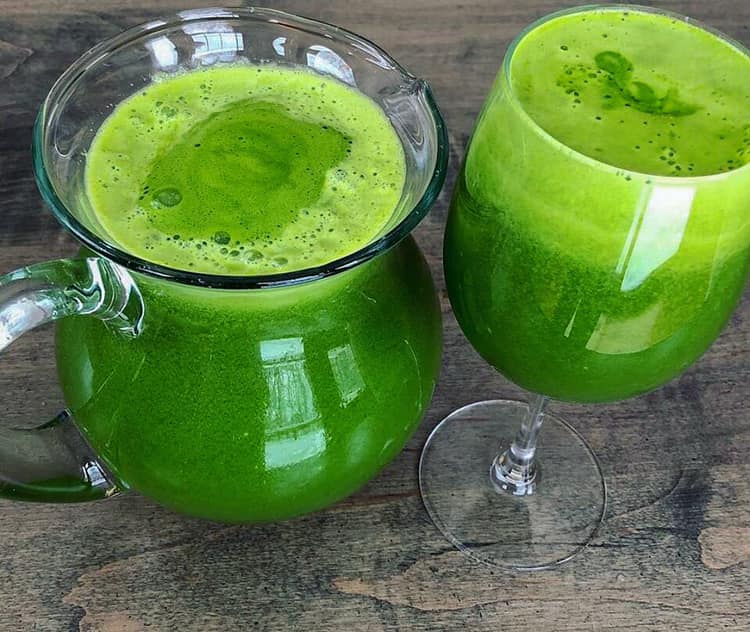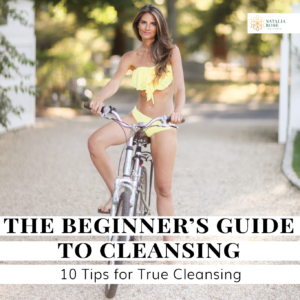
by natalia | Aug 19, 2021 | Green-centric Diet, Health & Wellness, Health Foods
Which foods are most alkaline?
Basically there’s a hierarchy of alkalinity. At the top of the food chart is green juice, the greenest juice being wheatgrass juice. Wheatgrass and then medicinal greens such as dandelion, watercress – those are all super alkaline. Then you have your dark leafy greens and then green vegetables like romaine, celery, and cucumber.
Why shouldn’t people just drink a huge glass of medicinal greens like pure kale?
If you were totally clean and it wasn’t going to hit any obstruction, you could do it without throwing up but it would still be like, “Whoa.” If you have obstruction and a pure medicinal green juice hits that obstruction, you will feel terrible. Because it’s just so kinetic and so alkaline and it’s going to have a chemical reaction with whatever is sitting in between. But you want to get the benefits of it. So, it’s no reason not to do it, but it’s about doing it by diluting it with the other stuff too.
What comes after raw vegetables?
If we lived in an indigenous place with wild fruits and vegetables, then fruits – in terms of kinetic energy life force and alkalinity – would fall right after green vegetables. But fruits today are hybridized. There is so much sugar in them, they are picked prematurely, and they are in trucks to get here and they’re full of fungus. As our world becomes more acidic, that which springs from our world is more acidic because it’s saturated in acid rain and acidic earth.
We talk about in Detox for Women how a woman is becoming so much more of a home for yeast and fungus. Well, the same things have happened with the fruits. You’ll notice that with every generation of fruits, every season, you’ll find that they are of a lesser quality. It’s the frog in the simmering pot. You don’t notice it, but if we were to flashback to the early eighties and go to a fruit market and taste that fruit, it would be totally different.
in loving service,
Natalia

by natalia | Aug 1, 2021 | Cleansing, Green-centric Diet, Health & Wellness
Great Body
So you want a great body? A truly great body begins with internally powerful, clear COMMUNICATION! Communication is dependent upon biological INTEGRITY.
Unfortunately, the norms we are directed to live by cause massive, constant interference in our internal communication networks. This results in our bodily integrity deteriorating day by day! Not a great body.
The only way to have a great body (which is firstly a body whose functionality is great – and then the cosmetic appeal will come) is to restore brilliant internal communication processes.
Restoring Communication to the Body
How do you restore communication to the body? You remove that which disrupts the communication of the body. You remove the radiation, mold, parasites, heavy metals, chemical poisons, environmental estrogens which are all stored in the waste matter that you can readily access via the large intestine through correctly administered colonics and enemas (where a clean, largely green vegetable diet is also applied).
From there, greatly reduce any continued intake that would either reintroduce those crass substances listed above to the body or any substances that might be mis-named “food” which only act as food for rogue microbes.
Increase your rest, deep sleep, oxygen intake and peace and you will naturally and effortlessly rise in consciousness as an added benefit to this truly great body you will have!
A truly great body starts with cleansing and comes online when communication and integrity throughout are restored.
1. Start with a daily fresh, raw cold-pressed green vegetable juice (free of fruit-sugar – for example, ask for “no apple”)!
2. Regular monthly colon cleansing (or more frequent intervals, as you progress & experience the results) by a skilled, reputable colon hydrotherapist.
In loving service,
Natalia

by natalia | Jun 15, 2021 | Eating, Green-centric Diet, Health & Wellness, Health Foods
Vegetables
Next we have all low-starch organically grown vegetables (think everything from tomatoes to Brussels sprouts, parsnip, broccoli, beets, carrots, etc. Many of you are aware and concerned that almost all of our modern vegetables (with the exception of wild greens) are hybridized so we cannot hope to avoid all hybridized vegetables. That debate comes up a lot…to which I say, enjoy them as part of a GREEN-CENTRIC diet with a tissue cleansing lifestyle and you will not have any problem (but you will have lots of pleasure to fuel your long-term commitment, which is what really matters!). Organic lemons are also top of the low-entropy heap. We love them organic lemons!
Fruits
Fruits are a very tricky category and generally best to avoid at large (with some wriggle room). Here’s what you need to know: inorganically grown, hybridized fruits that are picked before they are ripe are a disaster and super-high-entropy! All our fruits today are way too sugary so they will eat away at the tissue and feed pathogens.
However, organic fruits also have a great deal of sun-power and a whole lot of kinetic energy because of the sun energy and their high-water content so, it’s not the same as eating other sugary foods. I would go very easy on them though if you’re determined to enjoy them and always only on an empty stomach (never with or following other food categories as in for dessert). Eventually, hopefully wild fruits will come back as our world realizes what domestication of plant life does to undermine the intelligence quotient in our food supply. Domestication of plants, animals and humans are all very high-entropy events.
But, at the core (allow the pun) today’s fruits (even the organic variety) are not “original fruit” and should not be treated as the perfect human food that “original fruit” (a.k.a. wild fruit that was available hundreds of years ago) was.
I hope this helps you further connect the dots and gets you ever closer to the ecstatic, inspired, syntropic, super-high frequency life-experience!
in loving service,
Natalia

by natalia | Jun 14, 2021 | Eating, Green-centric Diet, Health & Wellness, Health Foods
Sugary Foods
The next major constituency of the high-entropy food club are sugary foods. Sugars are high entropy because sugar effects the tissues like acid and immediately begins eating away at living tissue (rather use a bit of natural stevia). With sugars, it’s that simple – it eats healthy tissue and feeds pathogens (yeast/fungus, bacteria, viruses and parasites) and as it does so (creating new pathogens). When you think sugars, think: “FAF”: F=Fungus, A=Addiction, F=Fermentation. FAF=Rot
Now, consider what happens when sugary foods meet processed foods…you have a double whammy of high-entropy substance. It’s an exponential offense – a kind of Jurassic Park of high entropy foods! And then, consider packaged foods that contain animal flesh like Pork Rinds and beef jerky.
Next we have the processed cow dairy products because they have no redeeming life force and they are extremely gluey, followed by the refined starch category. The more refined the starches, the higher-entropy. This is because the more processed, the more sticky the starch. The stickier the starch, the more it will stick in the tissue and also invite mucoid plaque to develop (which all these high-entropy substances do by the way).
Mucoid plaque is another way of suffocating life force and cells/preventing conductivity and reducing oxygen in the blood and tissues. So, consider all starches from rice to bread to pop-corn and their entropic effect. These are not natural human foods for human tissue. These are just things we’ve adopted and come to take a certain pleasure in. You can just as easily leave them behind in favor of water-containing low-entropy plant foods that will not rot you out of your otherwise beautiful physical home.
The low-entropy category is as follows: top of the hierarchy (the most low-entropy foods, meaning the least inclined to contribute to rot in the body and most inclidned to help remediate it) are wild herbs. Wild herbs (all green herbals: parsley, cilantro, dandelion, basil, mint, rocket/arugula, etc.) should be the mainstay of the modern diet because they snuff out rot and imbue the body with synthesized sunlight (chlorophyll, the body’s truest food-source nourishment).
Tomorrow, the Final Installment of Entropy and Dietetics!
in loving service,
Natalia

by natalia | Jun 13, 2021 | Eating, Green-centric Diet, Health & Wellness, Health Foods
Rotting Foods
Foods and substances which do not rot readily at room temperature, on shelves but DO cause the body to rot more readily than other substances are “high-entropy foods.” To state it differently, they might not rot outside the body but boy do they ever get the body rotting once they get in!
So, since these packaged, processed foods are the most inclined to cause the most rapid deterioration in the body, I define them as high-entropy substances.
The highest entropy substances, even higher than packaged processed foods are chemicals, heavy metals and radiation. This puts pharmaceutical drugs at the tippity top of the high-entropy hierarchy, right up there with lead, mercury and radioactive fallout. There’s not much more of a sinister and rot-inducing substance than pharmaceutical drugs.
Next down on the hierarchy we have the highest-entropy foods: these are the processed foods (notice: processed foods have an extremely low-water content which means they instantly stick like glue in the tissue.) Without the kinetic energy to help move them through the body, this is the kind of stuff that pretty much stays with you forever. I know you might like it — but do you like it that much?
This category virtually instantly suffocates healthy cells and tissues upon arrival and accelerates the decomposition cycle, starting wherever they land/nest after ingestion. In and among this category we have concentrated ‘machine’ oils like canola and safflower oil. This group is also home to all processed soy foods as well as all foods that have been treated with hormones, antibiotics or other shelf-life chemicals: namely mainstream animal products. The dead tissue (animal flesh) is also known as necrotic tissue and necrotic tissue by definition is decomposing tissue. This is what you are eating when you are eating animal fleshes. I say this without judgment.
It doesn’t do anyone any good to judge this, just to look at what it actually is. Animal products may still play a role in a smart transitional cleansing diet but let’s be conscious about what animal flesh is – it is a decomposing material. This is why it is dyed and has such a short [natural] shelf-life.
Tomorrow, Part 3 of Entropy and Dietetics!
In loving service,
Natalia

by natalia | Jun 11, 2021 | Eating, Green-centric Diet, Health & Wellness, Health Foods
Entropy and Dietetics: Making BIG Connections!
Now that we’ve established that centripetal force/spin is syntropic (a.k.a. life-generating) and centrifugal force/spin is entropic (a.k.a. life-deteriorating), we can go to the next step and apply this knowledge to our dietetics! You all are always asking me about the dietetic details so here you go! Here’s what we’re going to do in this installment:
Step #1: Define and identify high-entropy foods/substances vs. low-entropy foods substances (see detailed explanation below).
Step #2: Reflect on dietetic intake (and historic intake — because that residue is still within you until you’ve done a significant amount of tissue cleansing) and therefore it is still your state of ‘internal affairs.’ (In other words, it’s your responsibility to look at it squarely in the eye and rectify it).
Step #3: Understand one of the most important facts of entropy and why it causes such a rapid de-spiraling process. Get ready for it…it is unpleasant and you may cringe as you read the word, I warn you but it is true: the entropic event is ROT. You do not need to have rotting substances in your body but until you can look at it for what it is and remediate it, that’s the issue. Decay, disease, illness, symptoms are all just indications of rot/degrees of rot (caused, as you now know, by blockages and “cut threads.”).
Step #4: Remove the rot by adopting a low-entropy diet, saturating the rot in greens and removing the accumulation from the tissue.
Okay, Step #1: I define and identify high-entropy foods and substances as: “Those foods/substances which incline our physicality and fields most readily toward entropic unraveling/rot.” Now, I realize that food technologists typically define high-entropy foods as the very opposite of my definition because their interest is in shelf-life, not tissue life. So, Setting the record straight: Substances that are designed for longest shelf life ARE ACTUALLY THE MOST INCLINED TO CAUSE ROT INSIDE OUR BODIES, THEREFORE THESE ARE THE MOST HIGH-ENTROPY SUBSTANCES IN THE LARGER SCHEME OF THINGS.
Tomorrow, Part 2 of Entropy and Dietetics!
in loving service,
Natalia









